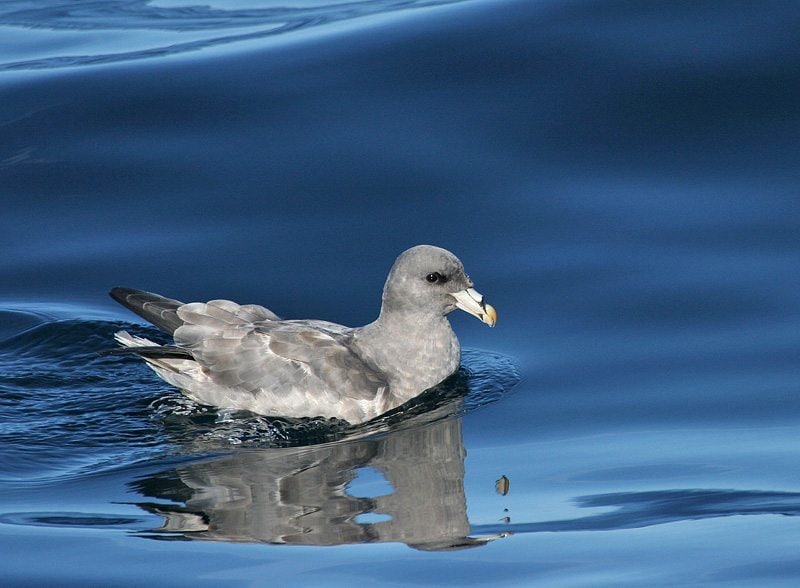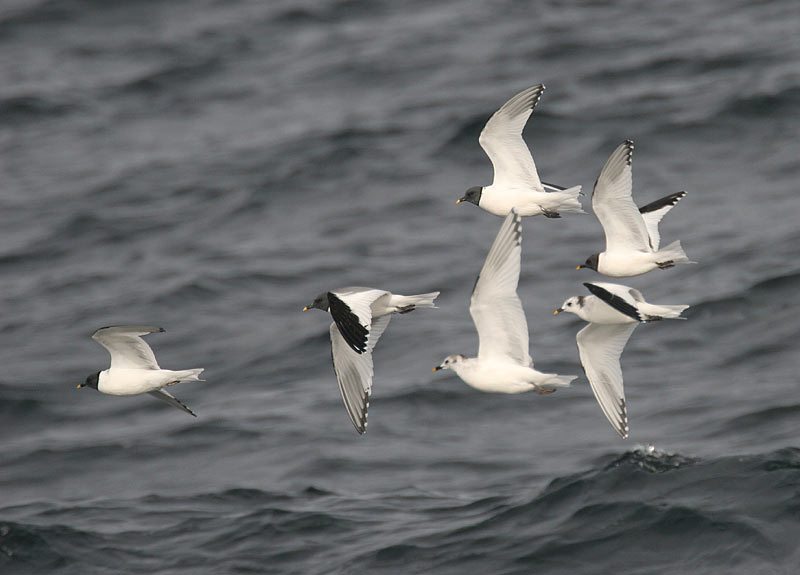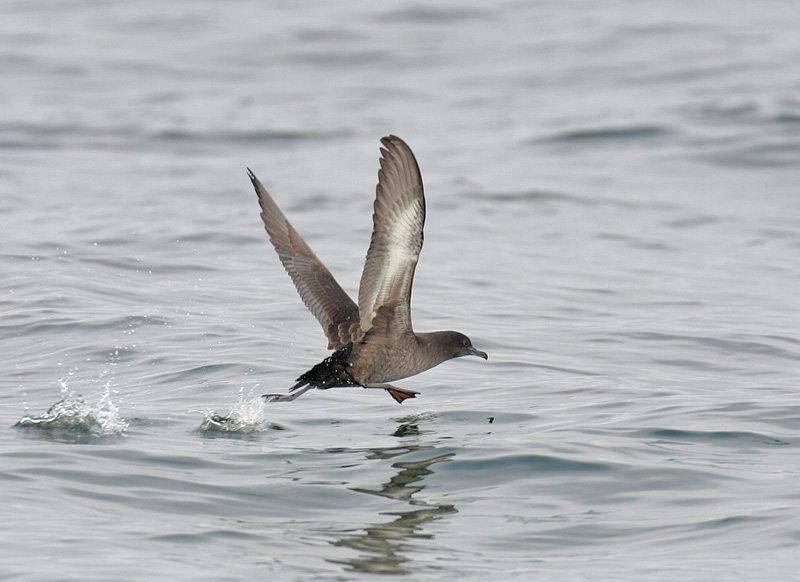Pelagic Birding for Beginners
By Maureen Lahiff
Have you ever seen an albatross? Do you want to have the pleasure of spotting their distinctive profile, tilting and soaring above the wave crests, flying without flapping? Articles about the physics of albatross flight are still being published in the 21st century, but you don’t have to master the physics to appreciate the poetry. Do you want to see shearwaters perform their graceful ballet?
Then you must go sea-birding.
There’s a great variety of birds that spend most of their lives on the open ocean, some never venturing further in than the continental shelf.
We’re fortunate in the Bay Area to have access to good day-long pelagic birding trips. (Pelagic comes from the Greek word for sea, pelagos.) I usually do one or two a year, with August to October being the months I consider most rewarding for a beginning sea birder.
My recommendation for a first trip is to go out from Monterey Bay. Because of the submarine canyon that extends out from Moss Landing, there is deep, cold water relatively close to shore. The cold water upwellings bring food that attracts pelagic birds, dolphins and whales. At its deepest, the canyon bottom is almost 12,000 feet below the water’s surface. You’ll see wildlife off and on all throughout the trip. There are also great trips out of Half Moon Bay. I was thrilled, and privileged, to see a pair of Marbled Murrelets swimming in the ocean on a trip that went south along the coast from Half Moon Bay to look for them.
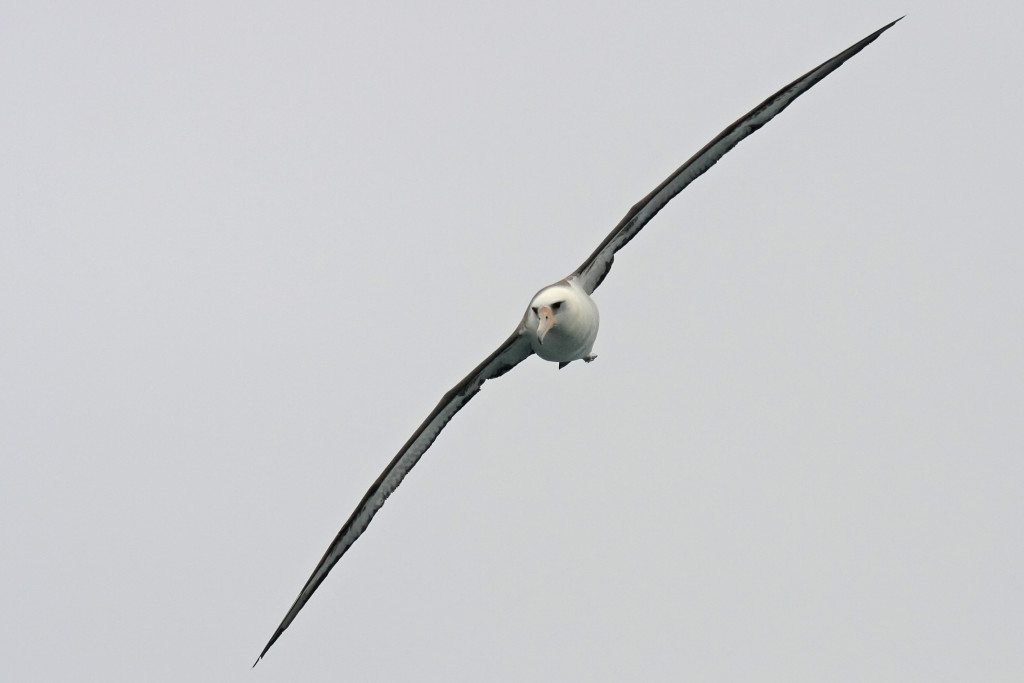
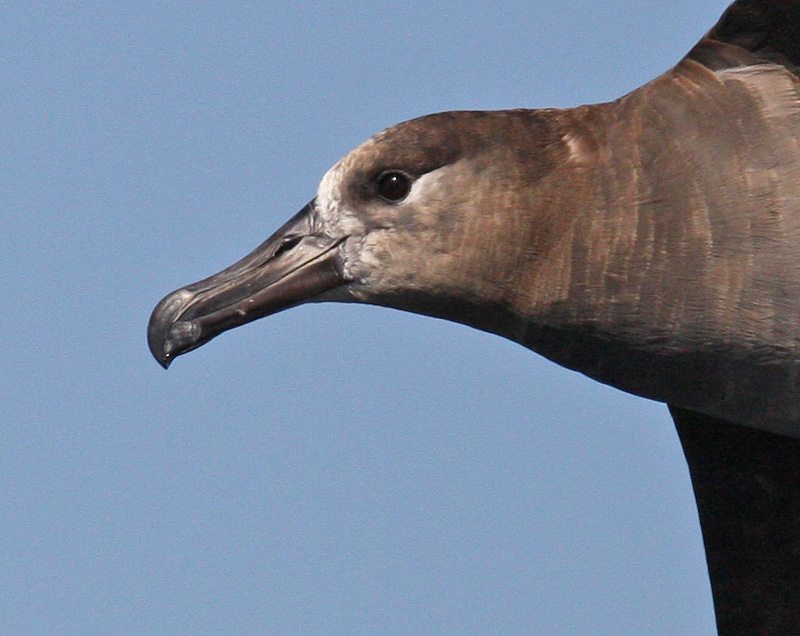
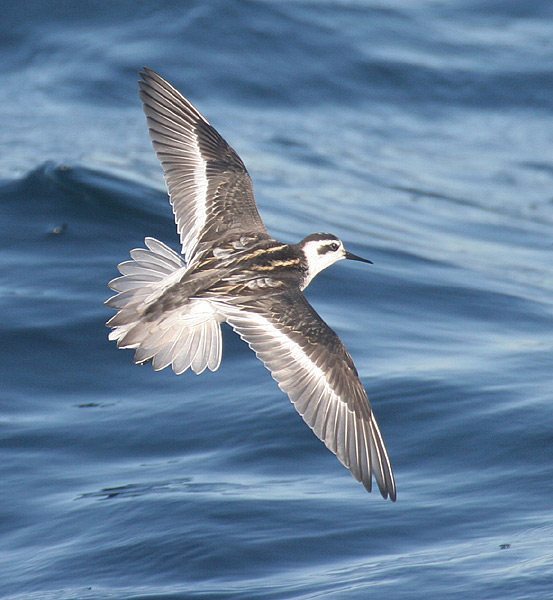
If the weather and wind cooperate, pelagic trips go out past the continental shelf, to where the albatross live and Red and Red-necked Phalaropes, shearwaters, and the elusive petrels and storm-petrels spend the winter or migrate through.
The Farallon Islands
The Farallon Islands are a destination for many pelagic birding trips, and for Oceanic Society whale-watching trips in the summer and fall. I think that anyone who loves the Bay Area and its natural history should not only learn about but also see the Farallones.
Late July and early August are prime times for viewing birds, as the young of burrow-nesting birds such as Tufted Puffins will be fledging and the adults will still have colorful plumage before they molt. Many of the birds that nest on the Farallones are colonial nesters, since they don’t have to defend a territory to protect their food sources. And many of them use burrows or shallow cavities, so getting a good look at them can be a challenge.
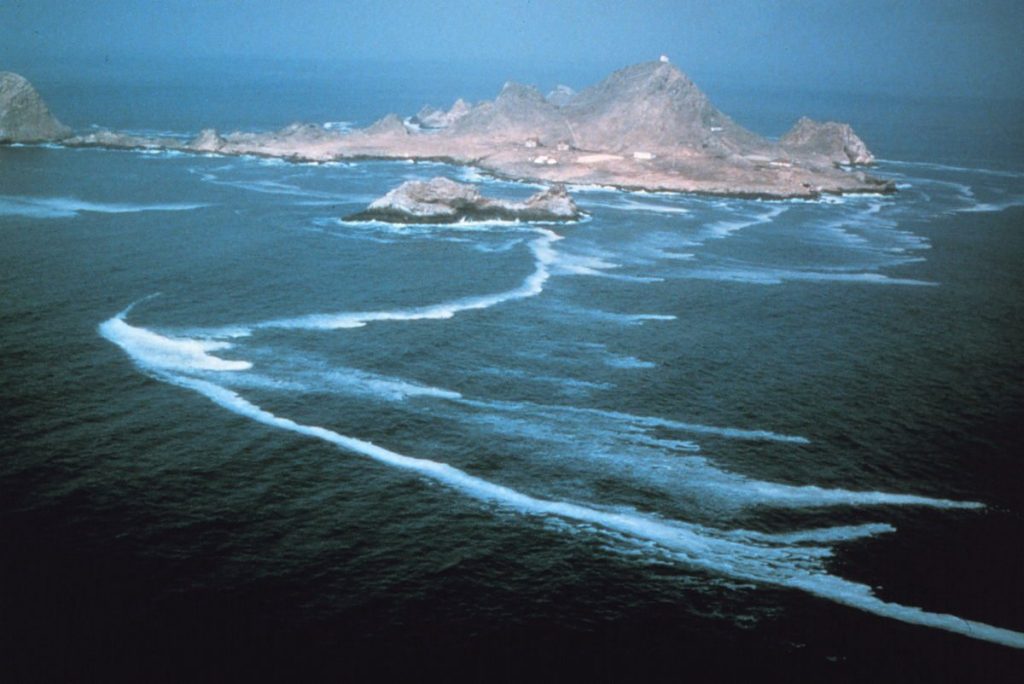
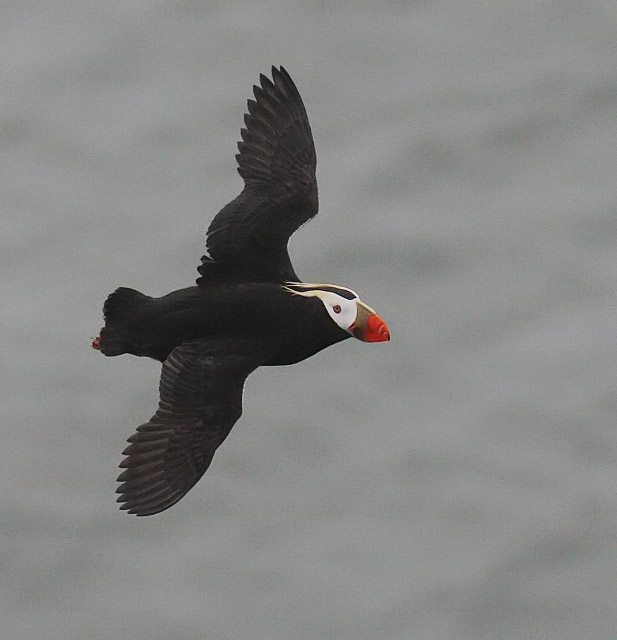
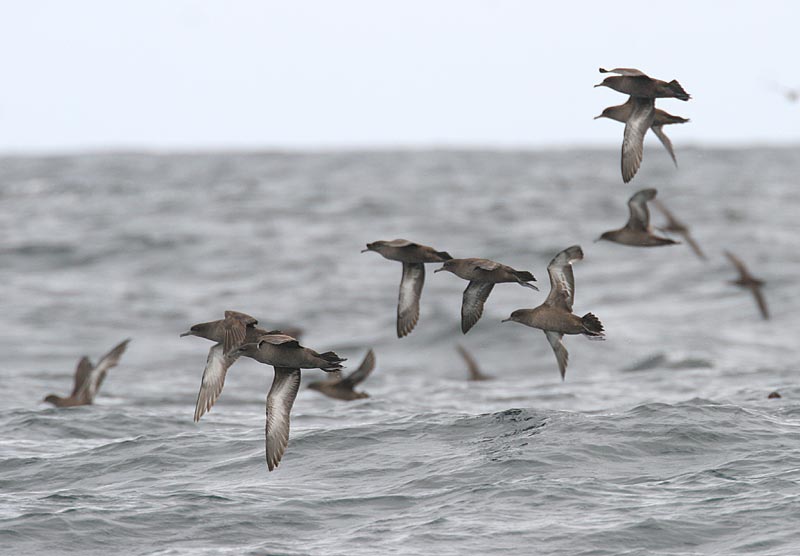
The Farallon Islands host an important breeding colony of endangered Ashy Storm-Petrels, but day-boat birders won’t get to see them since they only venture out at night, and not even then if the moon is close to full. The same is true of shearwaters in breeding season.
On a Farallones trip, you’ll get fantastic views of San Francisco and the Marin Headlands. Passing under the Golden Gate Bridge, you’ll see Common Murre dads and their chicks in late summer and early fall. The drawback of a Farallones trip, if it can be called that, is the 27-mile distance from San Francisco. Once you’ve left Point Reyes National Seashore behind, you may not see many birds or marine life until you reach the islands.
An amazing band of protected waters
The National Marine Sanctuaries are treasures protected for us and for future generations, for a range of wildlife from the tiniest ocean-going animals up through whales, and for the birds that migrate through or spend large amounts of time on the open ocean. The federally-protected areas off of San Francisco include Cordell Bank (which you can visit with the Point Reyes National Seashore Association), the Gulf of the Farallones, which is a large area around the islands, and Monterey Bay. In addition, the State of California has set aside many other marine areas with various protections.
Chumming
Whom to go with?
Alvaro’s Adventures, Shearwater Journeys, and the Oceanic Society all offer discounts to Golden Gate Bird Alliance members. I’ve been out with all of them.
The advantage of going out with Alvaro Jaramillo or Debi Shearwater is that the trip is all about the birding. On their trips, they often tell the skipper to “stop the boat” so that everyone can observe a bird, or they direct the skipper to try to get closer to a briefly-glimpsed petrel.


On the other hand, you’ll learn more about the natural and human history of the Farallon Islands, and spend more time there, on a trip with the Oceanic Society, whose Farallon trips run from May to November. You can board in either Sausalito (where the boat harbors) or San Francisco’s Marina Yacht Harbor. If you’re coming from the East Bay, I recommend boarding in Sausalito; parking is easier, and the cruise across the bay is spectacular. The introduction and welcome talk happen in San Francisco, where the naturalist boards. Some but not all of their trips include a guide who is an expert birder; ask about this when booking a trip.
Worried about seasickess?
If you want to try wildlife watching from a boat without committing to a daylong voyage to the edge of the continental shelf, consider a half-day whale watching trip out of Monterey or Half Moon Bay.
To maximize your chances of avoiding seasickness, follow the usual advice. Take a seasickness prevention medication one to two hours before your boat departs. Cyclizine is supposedly less sleep-inducing than meclizine. Don’t consume much alcohol the evening before, get enough sleep, eat something for breakfast, but not a huge meal with a lot of fat.
(You can stay near your harbor the night before. The Monterey hostel has rooms for small parties as well as beds in dorms, and is ideally located, even with a parking lot. You can bring your favorite breakfast food and prepare it in the kitchen. There’s also a hostel at the Point Montara Lighthouse for Half Moon Bay trips.)
Other rewarding ways to bird on the water
Not quite ready to try birding on the open ocean? Consider birding on the calmer waters of the Bay or the Delta!
Golden Gate Bird Alliance sponsors several wonderful trips with Dolphin Charters that are great opportunities to see water birds in action. There’s a boat trip on the Bay, usually in November, a trip on the Delta, usually in February, and a trip up the Napa River in March. All three trips visit habitat you can only see from a boat. Check our Field Trips web page for dates and details. Or sign up for our free monthly Field Trips e-newsletter to find out about these and other GGBA trips.
There are also independently-operated birding-by-kayak trips on Tomales Bay and Elkhorn Slough.
Adventure and great bird sightings await you!
————————————–
Maureen Lahiff grew up in the Midwest, where she became fascinated with waterbirds of the Great Lakes. The shorebirds and waterbirds on the Bay, the Pacific Coast, and open water are all a constant delight. She co-teaches a Golden Gate Bird Alliance waterbirds class with Linda Carloni in November: See the Classes page of our web site for details.
